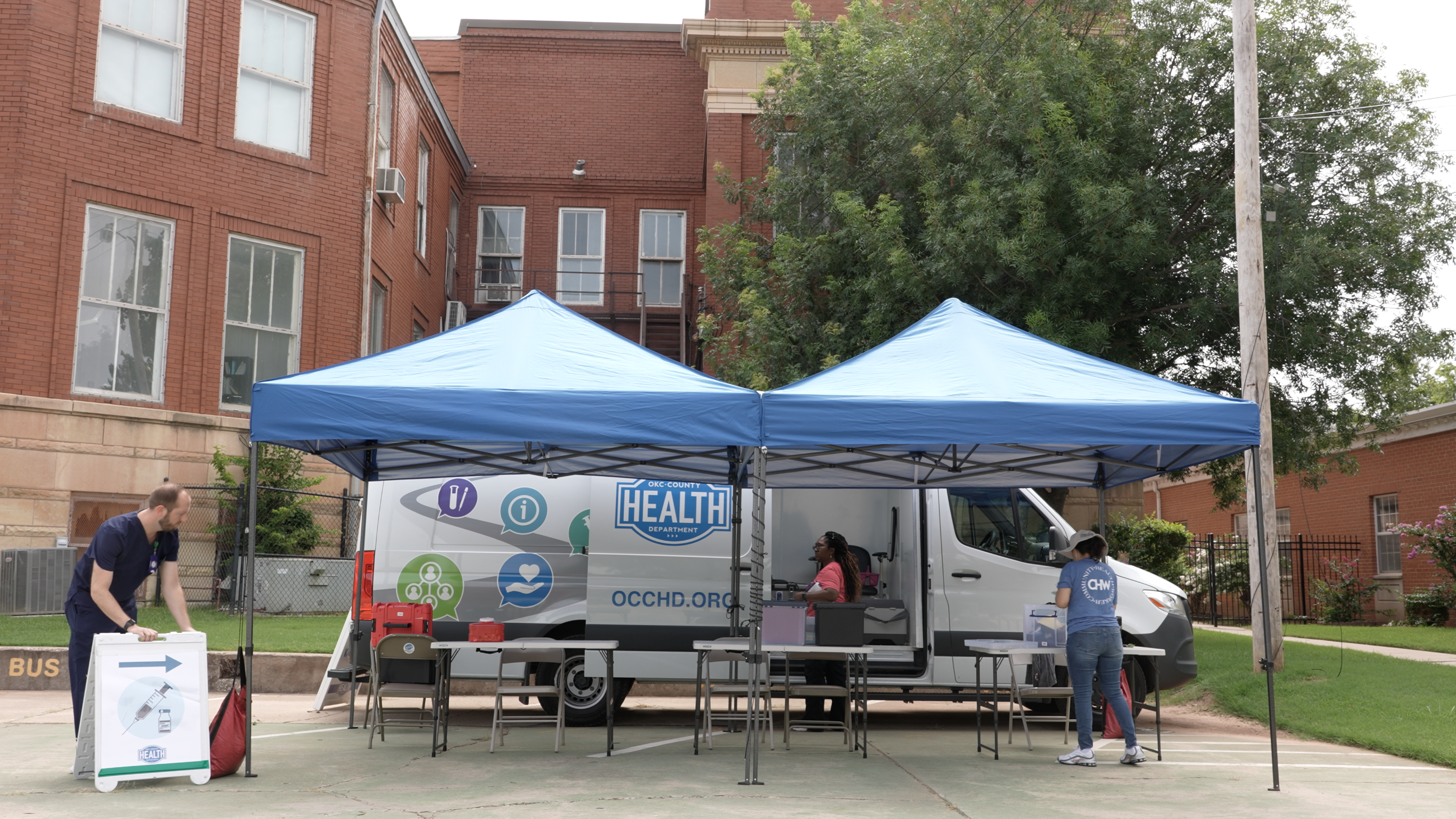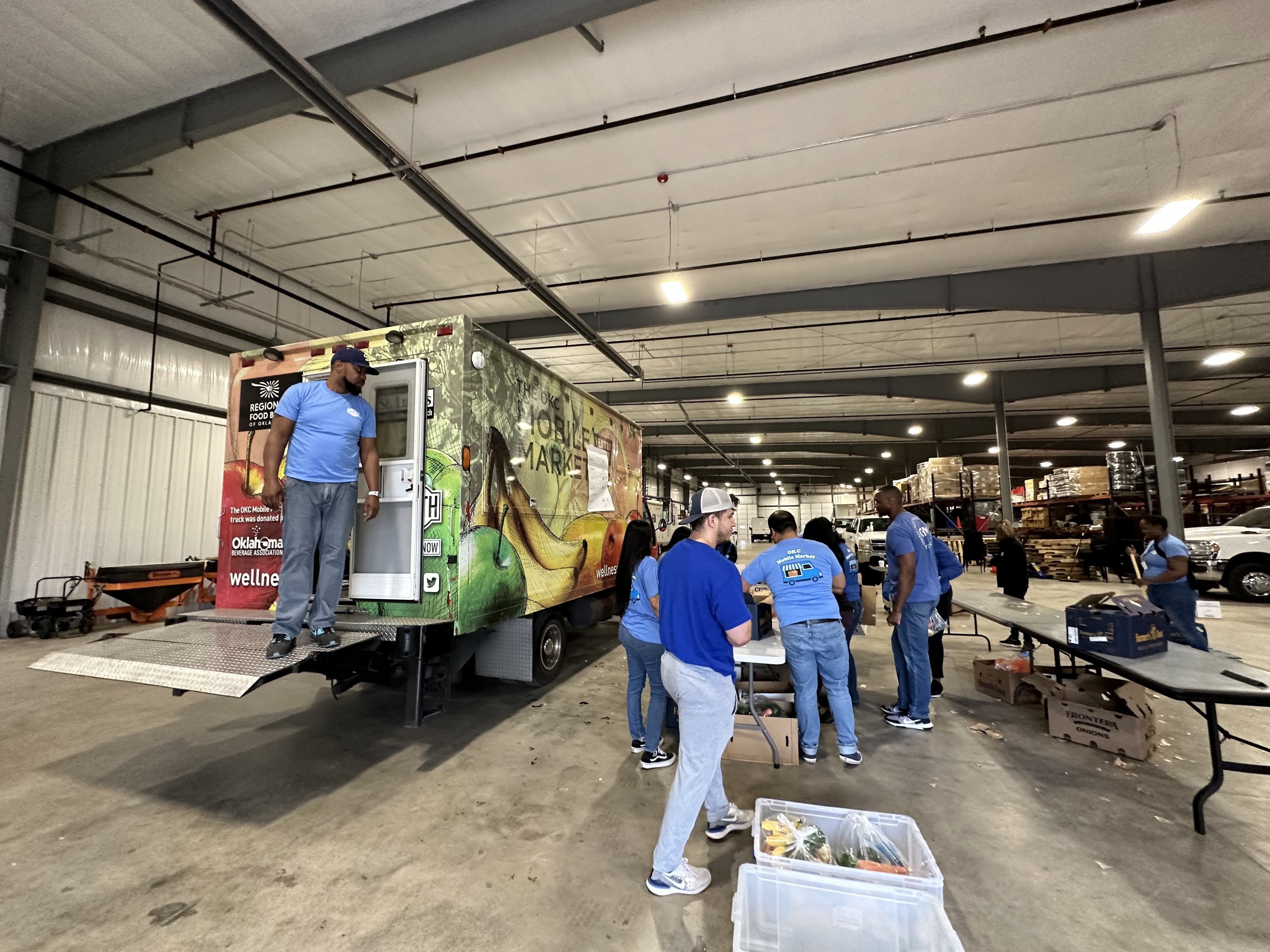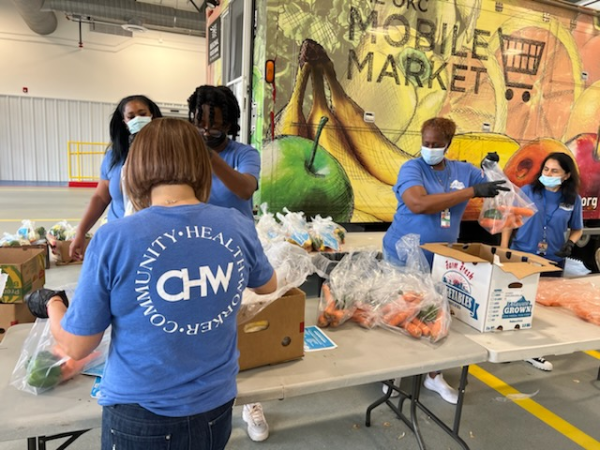The COVID-19 pandemic highlighted what we already know to be true: higher-risk populations are especially vulnerable to public health threats and emergencies. The COVID-19 pandemic magnified higher-risk populations are exceptionally vulnerable to public health threats and emergencies. Cultural differences, trauma responses, perception of health and government agencies, and available resources affect the way communities and individuals react. Building intentional and authentic relationships with higher-risk populations is key to building community resiliency, addressing vaccine hesitancy, and eliminating barriers to message dissemination. The Oklahoma City-County Health Department (OCCHD) addresses these barriers by utilizing Community Health Workers (CHWs).
The CHW Model
Representation matters, which is why OCCHD has been intentional in employing CHWs that can provide cultural representation to help anticipate barriers and begin bridging the gap through relationship building. CHWs have the flexibility to interact with individuals through different avenues to build trust. For example, through the Community Health Engagement Program (CHE) at OCCHD, CHWs have various opportunities to build authentic relationships and engagement with the community through the following ways: OCCHD Total Wellness program, outreach events, Mobile Market, Community-Based Organizations (CBOs), public schools, and clinical settings. All CHWs in the CHE program have completed the same training, which includes CHW Foundational Training (13 core competencies), Motivational Interviewing, Advocacy, SoonerCare/Medicare, De-escalation, and facilitator training. On top of these mandatory trainings, CHWs continue to participate in online webinars and refresher reinforcement sessions.
The CHE program has two teams of eight CHWs. The “outreach” team members are embedded 20 hours per week in CBOs located within higher-risk areas of the county. OCCHD has formal agreements with those organizations to ensure that the CHW has adequate workspace within the organization, has an onsite contact within that CBO to provide guidance and oversight, has clearly defined roles and expectations, and that the CBO is meeting regularly with OCCHD to ensure all needs are being met. The goal was to choose CBOs that have a gap in their services that a CHW would be able to fill. We chose smaller organizations with big impacts in the community. The other 20 hours per week are spent participating in community outreach events, assisting with OCCHD’s Total Wellness program, assisting with Homebound vaccination visits, and participating in our Mobile Market program.
Total Wellness Program
The OCCHD Total Wellness program is an eight-week lifestyle change class that is taught by registered dietitians. It is free of charge to the public, and the goal is to reduce the risks of diabetes and cardiovascular disease. CHWs attend the weekly classes in order to complete a Social Determinants of Health (SDOH) screening with clients and build a relationship with each client to then address any social service health needs identified. Additionally, CHWs were also trained by Total Wellness staff to perform health screenings that include a lipid panel. These health screenings can then be performed by CHWs within their CBOs. This partnership has proven to be very successful in offering wrap-around services. Having the CHW there each week allows them to build authentic relationships with clients and the clients feel comfortable opening up about other needs.
CHWs in the outreach division also partner with OCCHD clinical services to assist with homebound vaccination visits. CHWs are paired with an RN and accompany them to clients who are referred for vaccinations. These clients are considered “homebound” and often receive assistance from the Department of Human Services (DHS). The CHWs role is to complete a SDOH screening and determine if the client has any additional needs that the CHW can assist with. If a need is identified, then the CHW gets their contact information. CHWs also take a packet of information for each visit to leave with the client on resources that could be helpful to them.
The “School” Team
The “school” team consists of eight CHWs that are embedded up to 30 hours per week in local schools. CHWs in the school setting receive referrals from a variety of sources such as students, school administrators, teaching staff, nurses, counselors and social workers. At the elementary and middle school setting, CHWs primarily receive referrals and connect with parents or guardians for a plan of action. At high-school level, those students with the support of their parents and school, work directly with the CHW for support. In many of our school districts, the school site will host a weekly meeting for their multidisciplinary teams to discuss certain cases and determine the plan of care. At these meetings, CHWs are utilized to research and find community resources for a variety of needs like clothing, food, legal inquiries, social services, health appointments, pest control, or housing. It’s crucial for a CHW to build trust with their school site in order to understand the needs in the community and where gaps in services are not being met.
The “Clinical” Team
The “clinical” team consists of four CHWs that are embedded within OCCHD clinics. That are considered a part of the clinical team. When clients come in for an appointment, they are given the following screening questionnaire: “Have you been hungry and unable to access food in the last 7 days?”, “Do you have health insurance?”, “Have you or someone you know felt depressed in the last 30 days and need free resources?” These questions are phrased in plain language. If anyone answers yes to any of the three questions, then it is automatically flagged on their chart that they need to see a CHW during their visit. If the CHW is with another client during time of discharge, their information is given to the CHW to follow up. This ensures that we are giving everyone a quick screening before their appointment to see if they have social service needs. The RNs are also able to directly refer a patient to a CHW if they determine there is need during their appointment.

Mobile Market Program Impact
All CHWs participate in our Mobile Market program, which is run by the CHE program. Mobile Market provides fresh produce, at no cost, to residents of Oklahoma-City County. Oftentimes, food insecurity, higher rates of infectious diseases, and lower levels of health literacy are also prevalent in affected communities. Increasing access and consumption to fresh produce will lead to better health outcomes among the communities we are serving through Mobile Market. CHWs are present at each stop to connect residents to resources, address social determinants of health, and build trust within the community. To ensure equity, there are no eligibility requirements to receive produce, however, we do collect zip code and COVID-19 vaccination/pandemic impact information. Each person receives a bag of fresh produce and information highlighting Oklahoma City-County Health Department resources. From October 2022 to April 2023, the Mobile Market program distributed 54,873 pounds of produce to 3,700 families.

Community Collaboration
In the CHE program it is our practice to consistently work with CBOs in the community with the intention of hearing from the communities we serve on how to be more intentional with messaging, exploring what public health topics they felt were most important to their community, and how their partnerships can help address health disparities, emergency preparedness, and trusted relationships in the community through building relationships with community health workers. This is accomplished by established quarterly meetings with community members, CHWs, and CBOs.
CHW Impact
The Community Health Engagement CHWs have had a tremendous impact within the community. Since 2022, 72 new or expanded community partnerships have been formed. These include non-profits, healthcare organizations, faith-based organizations, community health centers, and colleges and academic institutions. A total of 29 school partnerships have been formed with formal MOUs in place. These partnerships include several school districts to embed CHWs. Community Health Workers have attended over 93 outreach events where they connect families to resources, link the community to OCCHD services, and collect SDOH information.
The most common services that CHWs assist with are
(1) Food Insecurity. 1 in 8 adults and 1 in 5 children face food insecurity in Oklahoma. CHWs routinely assist with connecting families to food resources, including through OCCHDs Mobile Market program.
(2) Patient Navigation. CHWs work with clients to overcome barriers and understand the medical system. Examples include translation assistance, health literacy intervention, assistance with medical and dental appointments.
(3) Housing Assistance. CHWs assist clients with housing placement to include Section 8, sober living, utilities assistance, and rental assistance. Addressing these needs is critical so that the clients can focus on their health needs.
(4) School-Based Referrals. With many local schools having a 1:600 ratio for school RNs to students, CHWs that are embedded in the school system have become vital for many districts. CHWs assist with identifying and connecting students and their parents to vital resources and services.
(5) Behavioral Health. CHWs work with local mental and behavioral health organizations to identify clients in need and refer them to the appropriate program or service. This includes assisting clients with placement into inpatient treatment, connecting them to free counseling services, and promoting the mental health 988 hotline.
(6) Health Care Navigation. CHWs assist with navigating the health care system. Examples include enrolling clients into SoonerCare, SNAP, and assisting with prescription assistance. Additionally, CHWs are trained to conduct health screenings that can be offered at no cost to the community.
As mentioned, the model of the OCCHD CHW program allows for CHWs to have multiple opportunities and various avenues to interact with the community. They become not only trusted voices, but familiar faces that residents begin to look for and seek out for assistance. We want to be intentional in the placement of CHWs to also bring stability to the areas that we are serving. For example, one of the CHWs assisting with the Total Wellness program was working with a client and spoke to a family member who relocated here from China. The client needed dental resources for the mother-in-law, uniforms for the 11-year-old child, and bottles, Pampers and gently used clothing for the 11-month-old. The CHW was able to supply all of the needs for this client and connected her with a resource that could help her in other areas, who also spoke her language fluently. This would not have happened if the CHW hadn’t been present weekly at this class and built a relationship with the client that allowed them to open up about other needs.
One goal that will always be at the center of our program is meeting people where they are. Through the CHWs meaningful connections with the community, they have been able to complete over 525 direct referrals to services and work directly with families in need to address any barriers. Although these numbers matter, our focus is the impact that CHWs are having on the community, the impact their presence will have in the community, the partnerships that are built through outreach, and the trust that is built through consistently showing up.



